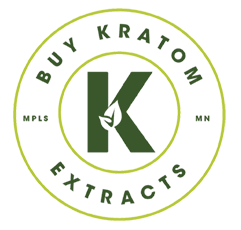
What Is Kratom?
- On March 23, 2022
Kratom is a tree native to Southeast Asia. The leaves contain a chemical called mitragynine, which works like opioids. It also contains 7-hydroxymitragynine, which has less available data tracking it, yet is reported to also alleviate pain by binding to the opioid receptors. This species of flora is related to the coffee bean family and contains these chemicals that produce stimulant-like effects and sedative properties, such as that which mimic opioids.
The drug is obtained and traded by mining the yellow-green leaves and distributing them in powder, pills, or other substances. Kratom is often marketed as a go-to for psychoactive maladies and drug withdrawal from opioids; however, the FDA has not approved kratom for any medical use. The kratom plant itself is attributed to various psychotropic effects depending on the veins or small tubes running through the plant and their color. Kratom comes in red, white, yellow, and other colors, each reputed to have varied results on mood.
The red and yellow are seen as more euphoric and sedative, while the white is more of a stimulant. In general, distributors should grasp the intended effect, but various natural and organic distributors are unfamiliar with the drug itself.
How is Kratom Made?
Kratom is from Southeast Asia and grows naturally in the wilderness. It is also manufactured in the United States in at least one known location. In terms of distribution, kratom is made by drying the herb and grinding it into powder form.
In Southeast Asia, kratom was typically served as tea and consumed as a beverage. In the United States, it can be found in herbal stores, all-natural drug stores, marijuana dispensaries, and gas stations. Kratom can also be fermented, and this blend is said to be riskier than other strains because it reportedly has stronger effects. For those who take kratom to ease pain, it is seen as a more harmless alternative or one where the benefits outweigh the cons.
How is Kratom Grown?
Kratom is farmed and produced in a setting similar to marijuana and grown in mass. As with any plant, kratom is grown, dried, and then ground into a powder and put in a capsule.
Is Kratom Legal?
While kratom enjoys legality in the United States, the benefits and the cons have been noted by the FDA, and disputes exist as to the safety of the drug. However, most studies pertaining to kratom are anecdotal, which means that there is a shortage of studies that formally recorded the impact of the chemicals.
As of 2018, the FDA has escalated its concerns over 7-hydroxymitragynine, and NIH studies recorded that “the potency of 7-hydroxymitragynine at the μ-opioid receptor is 30 times higher than that of mitragynine and 17 times higher than that of morphine. Case reports regarding poisoning with kratom are reported, but the toxic or lethal ranges for the concentrations of the active substances have not been established. ” In other words, the safety of kratom is currently disputed since it is not an illegal substance, yet it isn’t tested for in cases of overdose amongst widely-known chemicals on a drug panel.
It would be classified as a Schedule II drug, which means it’s not illegal but on a watched list of drugs cycling through the legal system. Much with marijuana before legalization efforts, the quality of kratom is difficult to track since it is unregulated. The paradox here is that kratom use is legal, but fewer studies are available testing its safety. Some lab testing has been done, and peer-reviewed circuits are still evaluating its safety.
Why Use Kratom?
Many professionals and people use kratom to lessen mood and physical pain. Someone with knee pain or another condition may benefit from the properties of this drug since it’s similar to the same kind of pain relievers prescribed by doctors’ offices.
Kratom use should occur with the same vendor and distributor because switching strands or quantities may happen and harm individuals not used to switching products since one may vary significantly in strength. Additionally, anything produced and sold should come from a safe distributor.
Contact us for further information about our well-manufactured product and any questions that arise.
Image Source: June Vita / Shutterstock




0 Comments